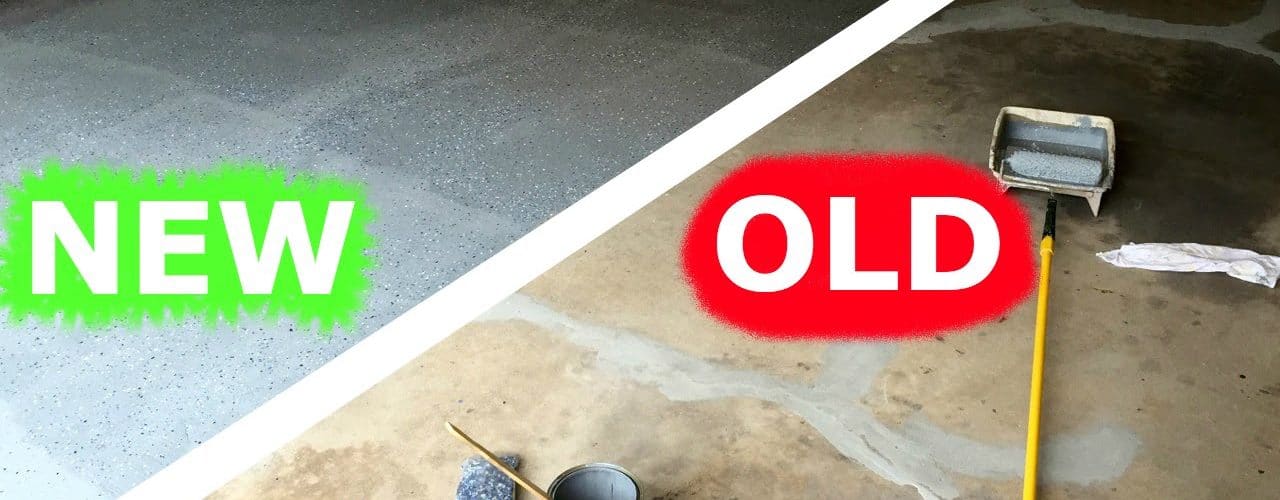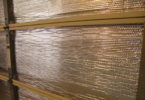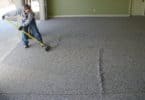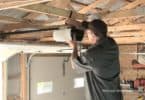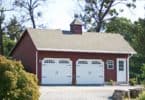Is that garage floor looking a little grungy? It isn’t difficult to achieve a good looking garage floor, but it does require plenty of preparation and hard work.
There are many possible paints, epoxies or coverings available for concrete garage floors, but the first and most important ingredient for this project, is plenty of elbow grease. If you’re looking for shortcuts or an easy way, you may as well call in the pros because your beautiful paint job will flake away quickly, if the preparation isn’t right. That said; here are the steps to preparing the floor for the perfect finish.
Contents
Tools need:
Wide broom with stiff bristles
eye protection
face mask/respirator
protective gloves
big squeegee or wet/dry vac
Paint rollers appropriate for the products you choose
long handle for the paint roller
Paint brushes
Rules to follow:
Keep the area well ventilated. There will be lots of fumes.
New concrete needs to cure for at least a month.
For proper drying, plan the work on dry, low humidity days, with moderate temperatures.
When rinsing with water, work from the back so the water flushes out the front of the garage.
Follow the instructions on the products you’ve chosen to work with.
Prepare the surface:
Sweep with a stiff bristled broom. First step is to get as much loose dirt and debris, as possible, off the floor.
Get rid of the spots. Paint will not adhere to grease spots. Use a good de-greasing product.
Scrub the floor. To make the job easier you may want to use a power scrubber with stiff bristled brushes.
Check for a previous coating. This is easy enough to do with a few drops of water in several places on the floor. If the water beads the floor has been treated. If there is already a coating, sealer or paint of some sort on the surface, it will need to be removed. A good concrete paint stripper can make the job easier. It is very important to rinse thoroughly and dry completely. Use the squeegee or wet/dry vac to help remove excess water. To remove the old surface you may want to use a concrete sander instead of the paint stripper. Use the respirator, gloves and safety glasses.
Etch the cement:
You can find products especially designed for this purpose or use a solution of one part 32 % muriatic acid to 10 parts of water. Sprinkle over the floor. A plastic, not metal, garden watering can works great for this, just remember not to reuse it in the garden. Use large amounts of water to rinse well. Squeegee out the water. Let dry completely.
Patch the cracks and holes:
For small cracks a tube of a concrete repair product is sufficient. For holes or larger cracks you’ll want a concrete repair compound. Let dry.
Prime the surface:
Using the long handled roller, coat the floor with a bonding primer. This will help the surface coating to adhere. Let dry.
Paint the surface:
There are a number of products available for this step. Concrete paint is probably the easiest to use, 2 part epoxy, the most difficult. Follow the directions on the product chosen. Use the appropriate rollers. Use a brush to cut in the paint on the edges where the roller doesn’t reach. Let dry for the recommended time.
For best results you may want 2 coats.
Coatings for cement are usually slippery, so you may want a non-skid additive mixed into the paint for the final layer.
<>

